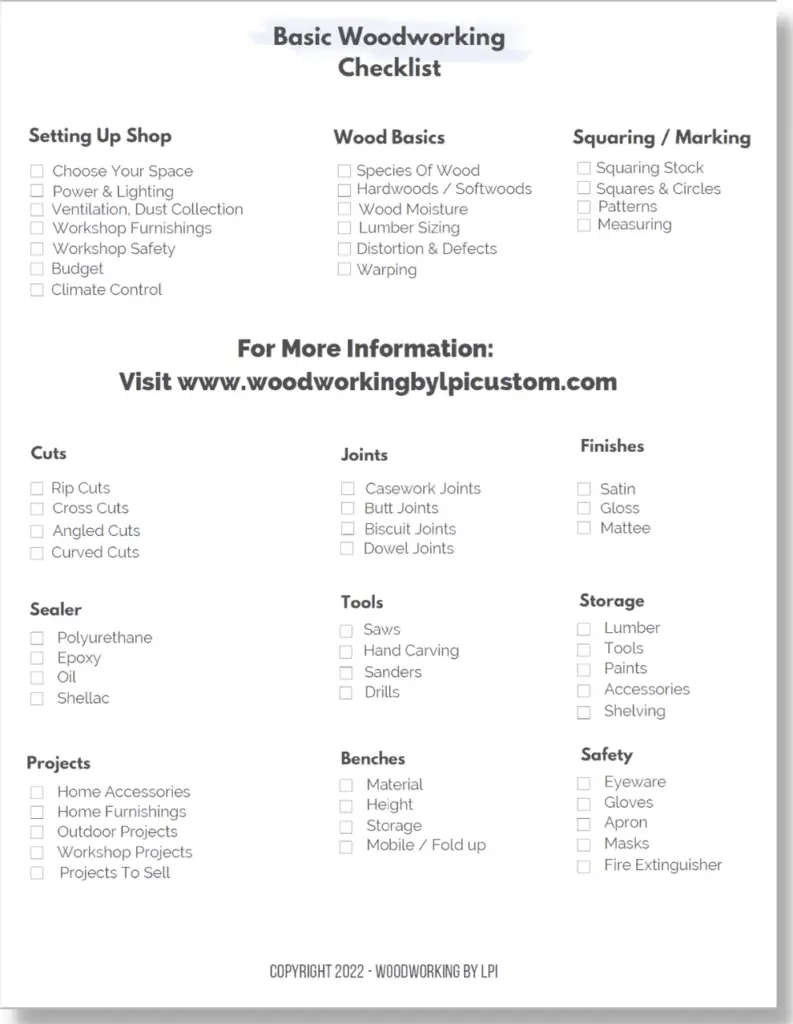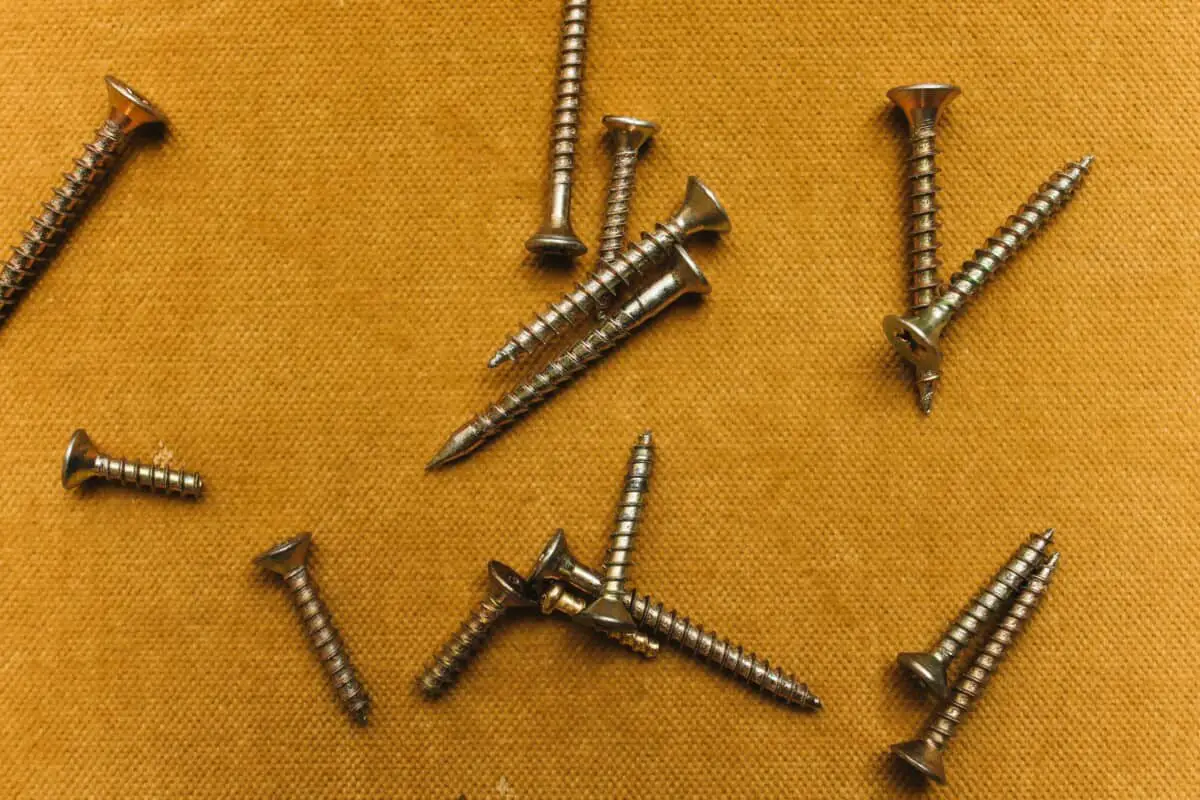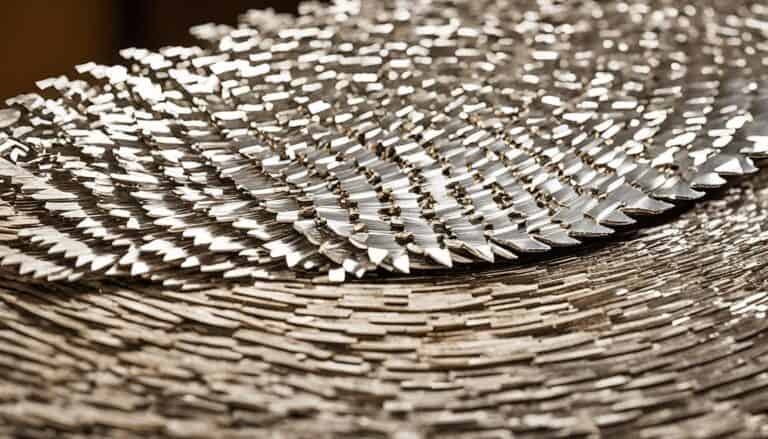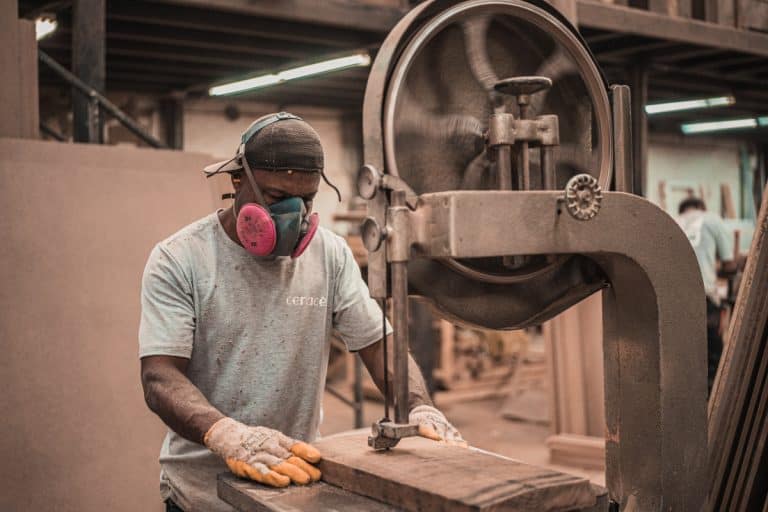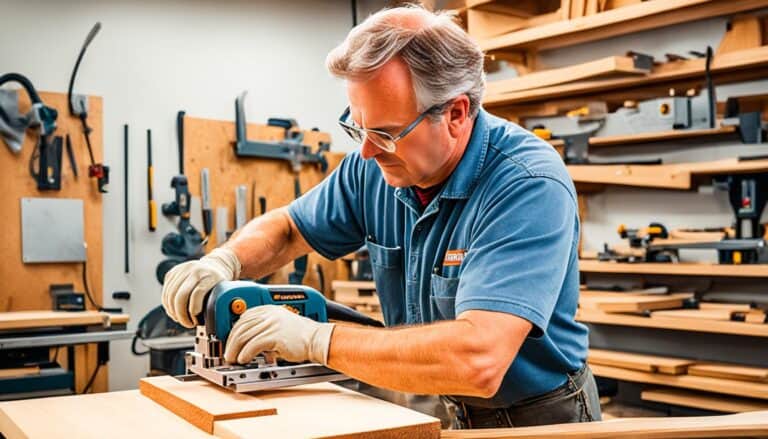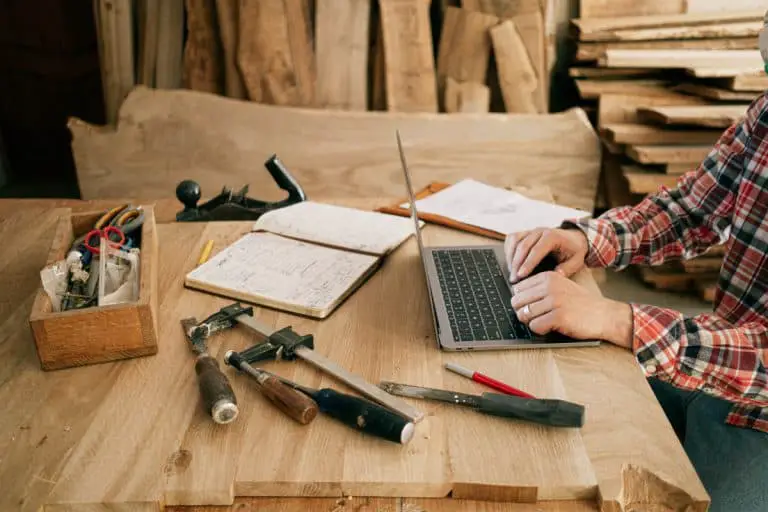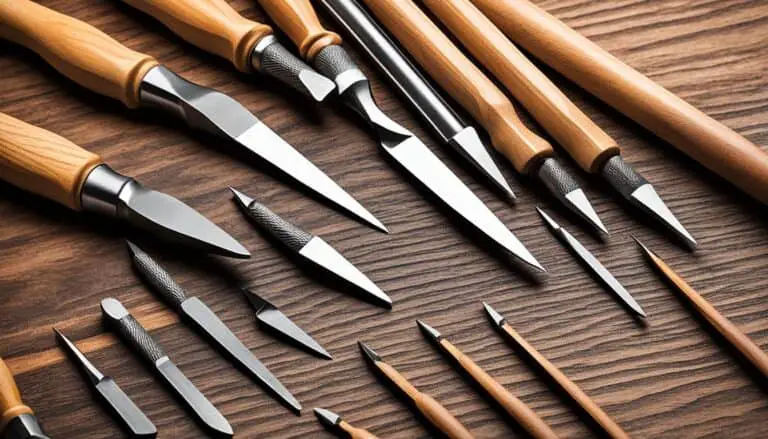Choosing the correct wood screw for your wood projects can be confusing. What kind of screws do you use for wood. All of these different types of wood screws are great for building and joining wood in many different ways. They create strong connections between pieces of wood to create virtually anything. With all of these different choices out there today you need to know which ones to choose.
Knowing the best type of screw to use will benefit you in many ways. Different sizes, coatings, and length is important in selecting the correct type of screw to use with your woodworking projects. Additionally, you will need to know what works best for the type of wood material and join you will be using. This will make it easier to choose the best screws for wood projects.
Visiting your local box store and looking at the literally hundreds of choices and different types of wood screws is not the way you want to begin your wood project. It can be overwhelming. Let’s look at a clear pathway to identify what wood screw you will need.
How Do I Know Which Screw To Use
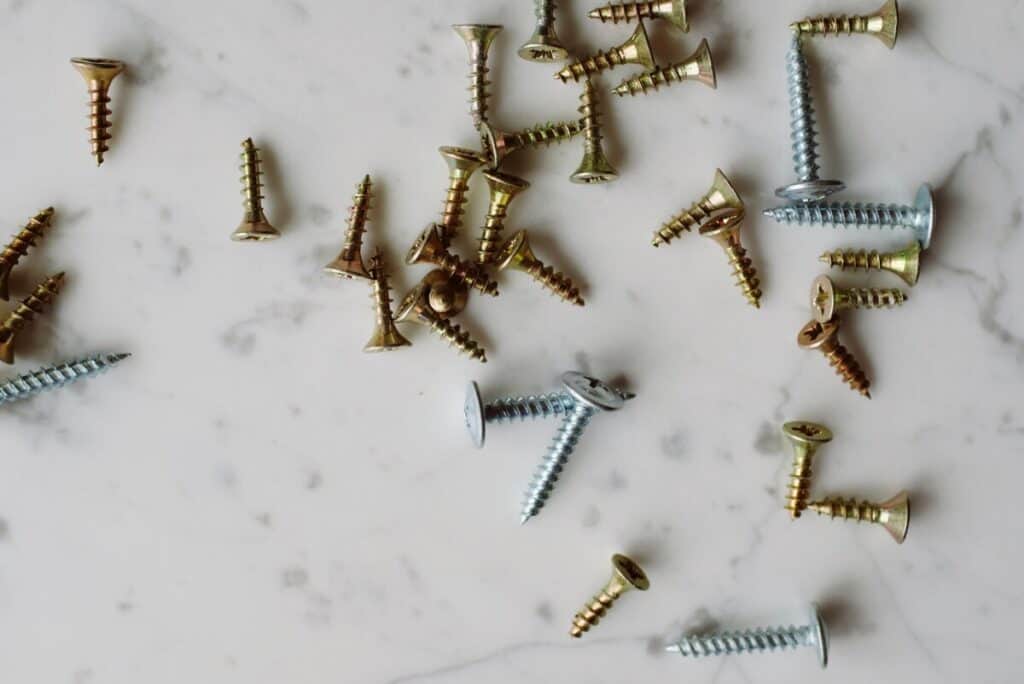
In the not too distant past, it was easy to pick a wood screw. They pretty much were zinc or brass and came in a standard length. With the introduction of new construction products and materials, this has massively changed. Now there are many different types of screws, sizes, shapes, lengths, and also different types of heads requiring different tools to use them. This really can be confusing when you are looking at for the most part simple wood projects which require a screw for joining for example.
Items To Consider – Know Which Wood Screw To Use
- Purpose
- Indoors or Outdoors
- Size and Length
- Material Your Using For Your Wood Project
The secret is to know what purpose are you going to use the screw for and then you will know what type of screw to use for your woodworking projects.
After you know the purpose for the use of the wood screw ask yourself if you will need them to be used outside or inside applications. This is important as it will determine if you need a coating on the screw to protect it from weather and last a long time.
Lastly, the size and length of the wood screw then the material you are using them on are important. This will determine the final pieces of the puzzle to help you know what are the best screws for your wood projects. Knowing these items will give you a great start on determining what wood screw you will use.
To provide a great overview of wood screws here is a great video providing information to help you decide.
Best Screws For Wood Projects – Recommended Wood Screw
Most of your wood project wood needs can be narrowed down to a few great choices. Below is my best recommendation for your most common screws for all your wood screw project needs.
- Flat Head screws, especially the type which has a tapered bottom on the head for countersinking
- Square or Star Drives are optimal and will save you a lot of aggravation
- #8 1- 1/4 Star Head Screws will fit most of your needs
Recommended Wood Screw
The Hillman Group 42177 Pro Crafter 8 by 1-1/2-Inch Wood Screw
- Flathead with countersinking nibs allows the screw to drive clean and flush to the surface
- Square drive for a confident stick fit while driving
- Zinc and yellow finish
- Secondary serrations reduces drive torque for easy installations
- Type 17 cut-point helps prevent wood splitting and allows for quick penetration
Take advantage of getting in bulk to save costs and to keep your wood shop prepared. We all know that not having something ready is frustrating as you need to go to the store and get supplies.
These are really great for most of your wood project applications and can save you a great deal of time. If you like to purchase you can purchase on Amazon here.
Types of Wood Screws and Uses
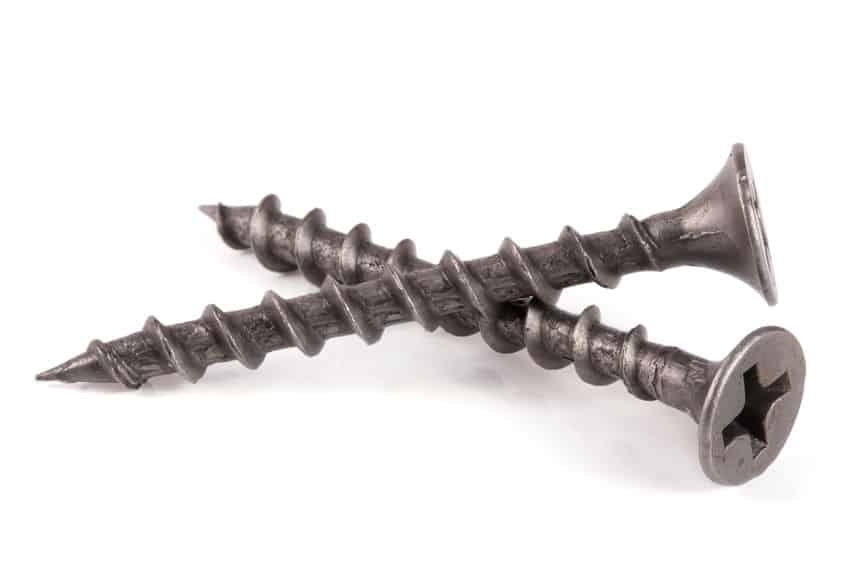
There are many wood screws on the market today. I wanted to provide you the best types for you to give the best woodworking experience. When you are looking at the many options they have common features. Here I will go over the basic features of the wood screw and what you should be looking for.
Nails And Woodworking – Misconception
Before we dive into the realm of wood screws I wanted to clear up a misconception I see on forums and discussions boards regarding nails and woodworking. Many woodworkers are seen and teach using nails in their woodworking projects. For folks who don’t commonly do woodworking on a regular basis, nails are considered to be the norm and not wood screws.
Contrary to what you may think screws are used more than nails. Don’t get me wrong nails such as brad nails for example are great for securing woodworking projects while the glue is drying. Or for smaller wood projects or for simply to hold woodworking projects together in preparation for final assembly. However, wood screws are a much better solution for securing your wood projects and will provide greater longevity for your woodworking projects.
Parts or Anatomy Of A Wood Screw
To truly understand a wood screw I wanted to provide the best description of the wood screw and each of its parts. As we continue further in our charts below and more detailed information this will benefit you.
A screw is made up of 4 components:
- Tip
- Shank
- Threads
- Head
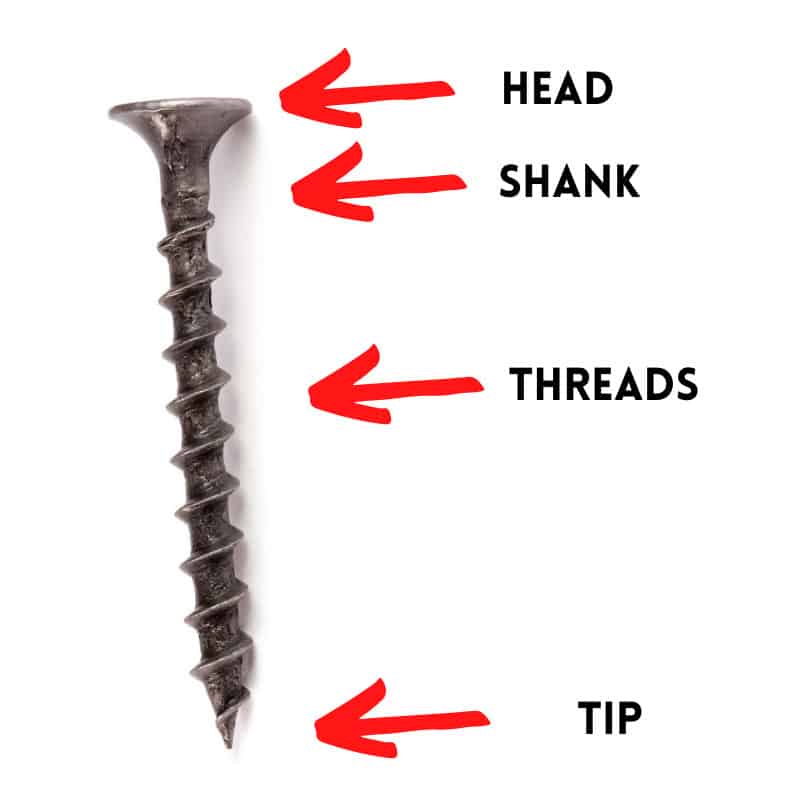
TIP – Wood screws that are used in woodworking have a pointed tip that assists the screw into a precise location. These self-drilling wood screws and cut into the wood like a drill bit.
Shank – The shank is the part of the wood screw right below the head and does not have threads. The importance of this is the ability of the screw to draw the wood material together.
Threads – The threads of a wood screw are the key to its success in keeping your wood projects together and tight. Wood screw threads are wider and more aggressive than metal threads and are the key to them working so well.
Head – The head of the wood screw is the most confusing for most beginner woodworkers with so many different types of heads which require different types of tools to use them.
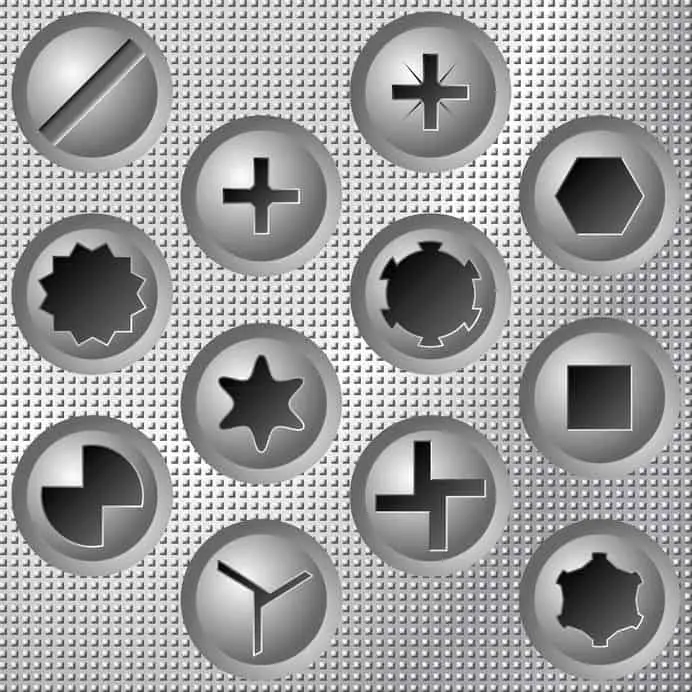
Here is a great video which describes wood screws
With time the wood screw head type has changed. In the past it was ahead that required a flat head screwdriver, then migrated to the Philips’s head, and to the Torx. You may ask yourself which is the best.
The best type of wood screw head is a personal choice. The latest type of screw head is the star Torx. This type of wood screw head would require you to purchase a Torx attachment for your drill or Torx hand tool set.
Wood Screw Recommendation Chart
Let’s look at the wood screw size and the applications which you may consider for them. We all look at the selection at the hardware store or box store and I’m sure you have asked yourself the same question I have which is what are these sizes and how do they help me decide which wood screw to pick.
Wood Screw Size Chart And Purpose
| Screw Size | Size | Purpose |
|---|---|---|
| #4 | 3/8 in – 3/4 in | Small items, Hinges – Light holding |
| #6 | 1/2 in – 1 1/2 in | Small items, toys, small jigs – Light holding |
| #8 | 5/8 in – 3 in | General Purpose – Most Applications – Medium holding |
| #10 | 3/4 in – 4 in | Construction – Heavy Applications – Heavy holding |
| #12 | 3/4 in – 6 in | Heavy Construction – Beams – Heavy holding |
All the wood screw sizes come in different lengths and for different purposes. The above chart is a good reference when looking for the best wood screw for wood projects.
Wood Screw Pilot Hole Sizes
Countersinking your wood screws is preferred for the best holding ability of the wood screw as well is preferred from an appearance perspective. Below I wanted to include a good reference for your to consider when using the wood screw sizes along with the countersink size appropriate for each wood screw size.
| Screw Size | Countersink Size |
|---|---|
| #2 | 1/4″ |
| #3 | 1/4″ |
| #4 | 1/4″ |
| #5 | 5/16″ |
| #6 | 5/16″ |
| #7 | 5/16″ |
| #8 | 3/8″ |
| #9 | 3/8″ |
| #10 | 7/16″ |
| #12 | 7/16″ |
| #14 | 1/2″ |
| #16 | 9/16″ |
| #18 | 5/8″ |
| #20 | 3/4″ |
| #24 | 3/4″ |
Wood Screw Length
How do you determine the wood screw length for your wood projects? There is no real science to determine this for you. However, you can take a common-sense look to help you determine. A general rule is the wood screw needs to go through the thinner piece and then thread into the thicker piece of material.
Using this general rule you would want to have 2/3’s of the wood screw in the thicker piece of wood material. Also, as the material you are initially placing the wood screw into thickens, you may want to only have 1/2 of the thickness of the wood screw in the bottom material.
Conclusion
Wood screws are the secret to woodworking project success. Choosing the appropriate wood screw will save you time, effort, and frustration. The most common choice of most woodworkers is the #8 screw at 1 1/4 long and will serve you well. Have plenty of them in your wood shop and you will never go wrong.

